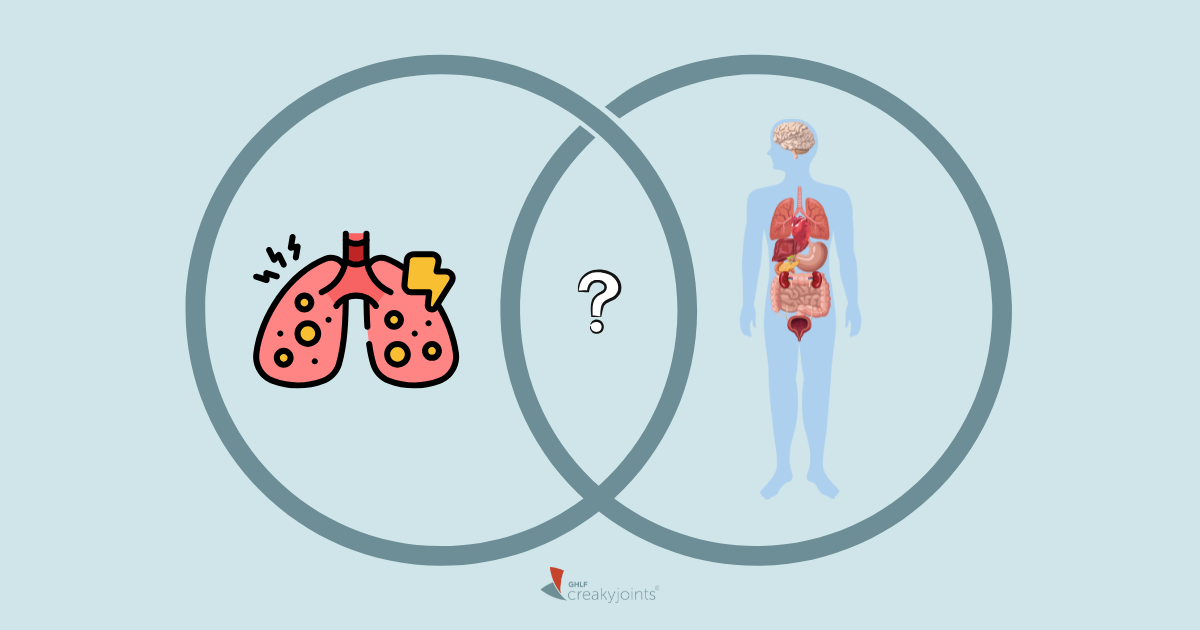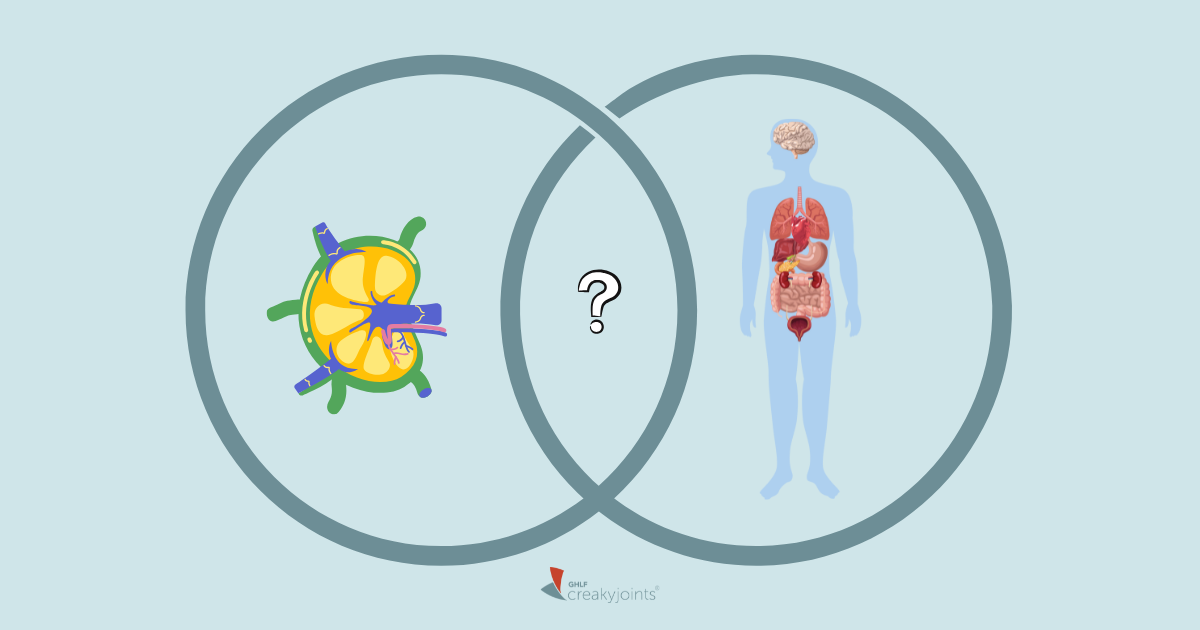![Gout Webinar - YT image[84] Gout Webinar - YT image[84]](https://creakyjoints.org/wp-content/uploads/2024/12/Gout-Webinar-YT-image84-1024x576.png)
![Gout Webinar - YT image[84] Gout Webinar - YT image[84]](https://creakyjoints.org/wp-content/uploads/2024/12/Gout-Webinar-YT-image84-1024x576.png)
Gout is more than just a painful condition; it’s a chronic illness that can lead to serious health problems if left untreated. But the good news is that with the right care, support, and even participation in cutting-edge research, you can effectively manage gout and improve your quality of life.
A panel of experts recently gathered for a webinar titled “Get Ahead of Gout: Manage Your Gout Today and Help Shape Tomorrow’s Treatments” to share insights and discuss strategies for living well with gout, from recognizing triggers to exploring new treatment options. Here’s what you need to know to take charge of your gout management.
What Is Gout?
Gout is a form of inflammatory arthritis caused by high levels of uric acid in your body. Uric acid is a natural substance your body makes when it breaks down purines. Purines are found in some foods and drinks, as well as in your body’s own cells. Breaking down purines is a normal process, and uric acid is just one of the leftovers from this process.
When too much uric acid builds up, sharp crystals can form in your joints, leading to sudden and intense pain, swelling, and redness. The big toe is often affected, but gout can also impact the foot, ankle, knee, and other joints. Gout affects about 10 percent of adults in the United States.
When left uncontrolled, gout is linked to other health risks like kidney disease, including formation of kidney stones, heart disease, and type 2 diabetes. This makes managing gout not only about relieving pain but also protecting your overall health.
What Causes Gout?
Many people assume gout is solely caused by diet, but the reality is much more complex. Genetics play a significant role in how your body processes uric acid, meaning even those who eat a balanced, healthy diet can still develop gout.
“Genetics are important. Uric acid is important,” explains Daniel Hal Solomon, MD, MPH, Professor of Medicine at Harvard Medical School and a member of the Division of Rheumatology and Division of Pharmacoepidemiology and Pharmacoeconomics at Brigham and Women’s Hospital. “Additionally, some medicines are associated with elevations in uric acid and gout flares, so it’s a complicated metabolic condition.”
While genetics and medications are factors outside of your control, certain dietary choices can make a difference. Foods like red meat, shellfish, and drinks such as beer are known to elevate uric acid levels and may trigger painful gout flares. “There are two dietary issues: One is foods that might elevate uric acid, and the second is foods that might trigger an attack,” says Dr. Solomon. “Both are important to be aware of.”
Even lifestyle habits, like alcohol consumption, can influence gout. “The reason alcohol is associated with gout is likely because it dehydrates people,” explains Dr. Solomon. A diuretic —whether a medication or a substance like alcohol — causes the body to produce more urine, leading to fluid loss. “When the fluid levels in our body are reduced, gout flares can be triggered.”
For Ron W., who was diagnosed with gout nearly a decade ago, recognizing his personal triggers transformed how he manages the condition. “I became aware of some of the food products that triggered it — you know, I was hitting all the bases: oysters, shellfish, and heavy beers,” he says.
However, not all gout triggers are within your control. “We work with patients to help them understand the triggers they can manage, like avoiding dehydration, and the ones they can’t, like genetics,” explains Steven McDermott, a registered nurse at Massachusetts General Hospital (MGH).
Creating a Plan with Your Doctor
The key to effective gout care is understanding your specific triggers and partnering with your health care provider to create a personalized plan that prevents flares and safeguards your long-term health. It’s all about teamwork.
“Patients need to know what triggers gout. They need to know what gout flares are, sort of identify those symptoms, and the earlier they can do that, the earlier they can initiate treatment for gout so that they can shorten the gout flares,” says Julien Dedier, MD, MPH, a primary care physician and professor at Boston University. “So education and self-management are both key. And then finally, it’s important for patients to let their providers know what’s working and what’s not.”
Education, collaboration, and a proactive approach are the cornerstones of managing gout and protecting your overall health.
What Are the Treatment Options for Gout?
Managing gout usually involves both short-term and long-term treatments. During a flare, medications like colchicine or nonsteroidal anti-inflammatory drugs (NSAIDs) can help reduce pain and swelling quickly, often getting you back to your routine within a few days.
Long-term treatments focus on preventing flares and lowering uric acid levels in your blood to protect your joints and overall health. These might include medications like allopurinol or febuxostat, along with lifestyle changes.
Acting quickly during a flare can make a big difference. “When a flare starts, early treatment can reduce the pain and how long it lasts,” says Dr. Dedier.
Advancing Gout Care: The TRUST Trial
The best approach to managing gout remains uncertain and what works for one person may differ from another. While it has been widely assumed by rheumatologists that reducing uric acid levels is the optimal strategy, this may not apply to all patients. For example, many individuals with mild gout experience infrequent attacks — perhaps once or twice a year — that they successfully manage with treatments like colchicine or nonsteroidal anti-inflammatory drugs (NSAIDs).
Researchers are working to improve gout treatments, and the TRUST (Treatment of Urate Lowering to Standard Treatment) trial, led by Dr. Solomon, is currently comparing two different approaches to managing gout:
- Treat-to-Target Serum Urate: This method focuses on lowering uric acid levels with medications, combined with advice on gout-friendly lifestyle habits.
- Treat-to-Avoid Symptoms: This approach treats flares as they occur, using medications like naproxen, ibuprofen, or colchicine, along with lifestyle guidance.
“We don’t know the best strategy for managing gout, and rheumatologists, who are joint specialists, have always assumed that lowering uric acid is the best strategy,” says Dr. Solomon. “It’s probably the case that some patients should be on uric acid lowering therapy and some do fine without it. And I think we need to understand who those patients are so we can be better partners with our patients.”
Taking the Next Step
Living with gout can be challenging, but you’re not alone. By understanding your triggers, working closely with your doctor, and exploring treatments that work for you, you can take control of your health and reduce the impact of gout on your life.
When people like you, who live with the disease, join us in understanding a disease it could make a difference in shaping the future of gout care for others, giving you a chance to contribute to progress in medical research.
If you’re interested in learning more about clinical trials like TRUST, talk to your doctor or visit the trial’s website. Participating could provide you with additional support and help shape the future of gout care for others. Click here to begin the survey.
Your Interactive Guide to Gout
Whether you’re newly diagnosed or have lived with gout for years, this guide has everything you need — from preventing flares and managing symptoms to making lifestyle changes and working with your doctor to find the right treatment plan. Download now.





